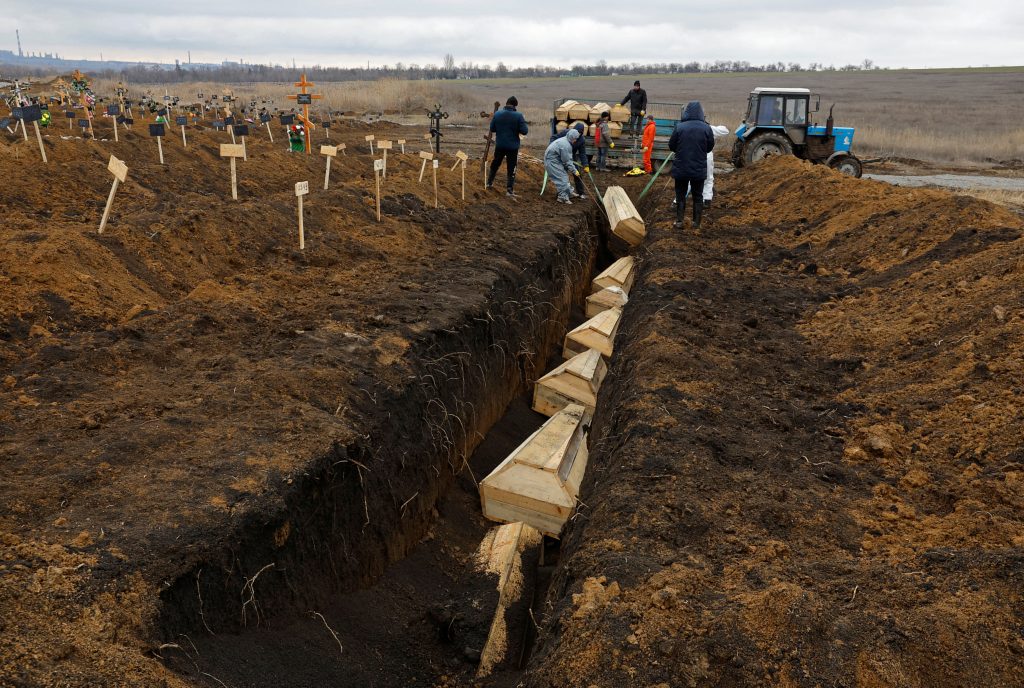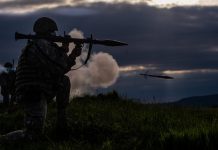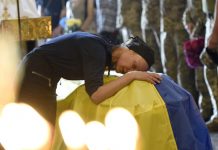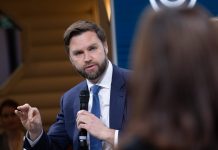By Taras Kuzio, for UkraineAlert
As the year draws to a close, there is a growing sense of Ukraine fatigue in Western capitals amid pessimistic forecasts, talk of a battlefield stalemate, and recriminations over the perceived failure of Ukraine’s counteroffensive. This grim mood is raising serious questions about the future of military aid to Ukraine and the prospects for continued Western support into 2024 and beyond.
Meanwhile, Vladimir Putin is looking more confident than ever. This week, he was in particularly messianic mood as he addressed the World Russian People’s Council. Ukrainians and Belarusians are not independent but are in fact part of the “great Russian nation,” he declared. According to Putin, these two nations have been artificially divided from Russia by the “separatist illusions” of the 1991 Soviet collapse.
Putin’s casual denial of Ukraine’s right to exist is a timely reminder of exactly what is at stake in the current war. The Kremlin dictator is clearly not a rational statesman pursuing limited political goals or seeking a negotiated settlement; he is an all-powerful autocrat who genuinely believes he is on a sacred historic mission. That mission includes the destruction of the Ukrainian nation.
We already have a good idea of what Putin has in store for Ukraine. In the approximately seventeen percent of the country that is currently under Kremlin control, millions of Ukrainians are subjected to a daily reality that includes the possibility of abduction, torture, death, or deportation. Those who manage to avoid these direct physical threats face the prospect of forced russification as the Russian occupation authorities systematically erase all traces of Ukrainian statehood and identity while pressuring the captive population to accept Russian nationality.
The Kremlin began preparing these genocidal policies well in advance of the full-scale invasion. Russian security officers reportedly compiled detailed lists of Ukrainian community leaders who would be targeted by advancing Russian forces in a bid to prevent any coordinated Ukrainian opposition to the takeover of the country. These registers included elected local officials, priests, journalists, teachers, activists, and military veterans. A clear pattern of abductions and disappearances has subsequently been witnessed in every region of Ukraine under Russian occupation. Meanwhile, in liberated villages, towns, and cities, the Ukrainian authorities have repeatedly encountered mass graves, torture chambers, and widespread reports of missing persons.
Throughout Russian-occupied Ukraine, Ukrainian monuments have been pulled down and replaced with commemorations of Russian imperial and Soviet history, while symbols of Ukrainian statehood have been systematically removed from public spaces. Moscow has imported Russian teachers to indoctrinate Ukrainian schoolchildren, pushing them to reject their nationality and embrace an alternative imperial identity. Entire parks and museums have been created to aid in this process, with children also forced to express thanks and gratitude to the Russian soldiers engaged in destroying their homeland. Predictably, the Ukrainian language is no longer taught in schools and has been banished from public life throughout Russian-occupied Ukraine.
Perhaps the single most chilling aspect of the Kremlin campaign to eradicate Ukrainian national identity has been the mass abduction and indoctrination of Ukrainian children at an extensive network of re-education camps inside Russia itself. This has already led to war crimes charges again Putin from the International Criminal Court in The Hague. It also appears to be a textbook case of genocide according to the UN’s Genocide Convention, which identifies “forcibly transferring children of the group to another group” as one of five recognized acts of genocide.
This is not the first time the Kremlin has been accused of committing genocide in Ukraine. In many ways, Putin’s genocidal policies toward Ukrainians are a continuation of the campaign unleashed by Soviet dictator Joseph Stalin, who sought to eradicate Ukrainian identity in the early decades of the USSR. The Stalin regime was responsible for the Holodomor, an artificial famine in 1930s Ukraine that killed millions of Ukrainians. Hundreds of thousands more were murdered during the Great Terror. Much like today’s Russian invasion, the Soviet authorities specifically targeted spiritual, academic, and community leaders who represented Ukraine’s statehood aspirations. The man who coined the term “genocide,” Raphael Lemkin, would later call Stalin’s efforts to destroy the Ukrainian nation “the classic example of Soviet genocide.”
Far from condemning the crimes of the Stalin era, Putin has sought to emulate them. Indeed, he has overseen the rehabilitation of Stalin, with memorials to victims disappearing and new monuments honoring the Soviet dictator sprouting up across Russia. It is likely no coincidence that on November 25, the day Ukrainians honor the millions killed in the Holodomor, Putin ordered the largest drone attack on Ukraine of the entire war.
If Western military support for Ukraine does not continue at current or increased levels, the present stalemate will deepen and much of the country will remain under Russian occupation. There is also a significant chance that the whole of Ukraine could fall under Kremlin control, exposing tens of millions of Ukrainians to the genocidal policies already being implemented throughout the occupied regions. This would obviously be a catastrophe for the Ukrainian nation, but the tragedy would not end there. On the contrary, the repercussions would also be felt far beyond the borders of Ukraine.
A genocide in the heart of twenty-first century Europe would shake the foundations of the entire rules-based international security system and transform the geopolitical landscape. It would plunge NATO into crisis while emboldening Russia and other authoritarian regimes around the world, ushering in a new era of militarism, instability, and international aggression. Even if a major war could be avoided, Western defense budgets would balloon to levels far beyond the current cost of arming Ukraine, while an increasingly hostile international environment would severely hamper economic growth. If Western leaders wish to avoid this nightmare scenario, they must adequately arm Ukraine now.
By Taras Kuzio, for UkraineAlert
Taras Kuzio is a professor of political science at the National University of Kyiv Mohyla Academy and an associate research fellow at the Henry Jackson Society. He is the author of “Fascism and Genocide. Russia’s War Against Ukrainians.”





